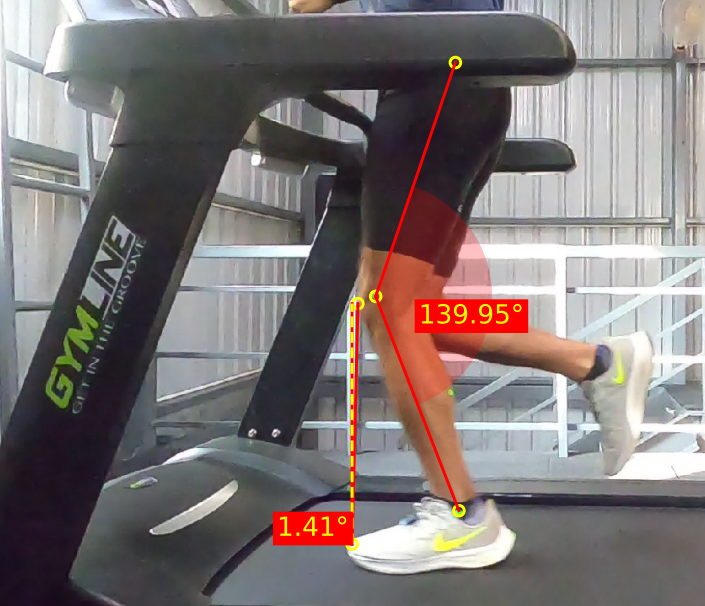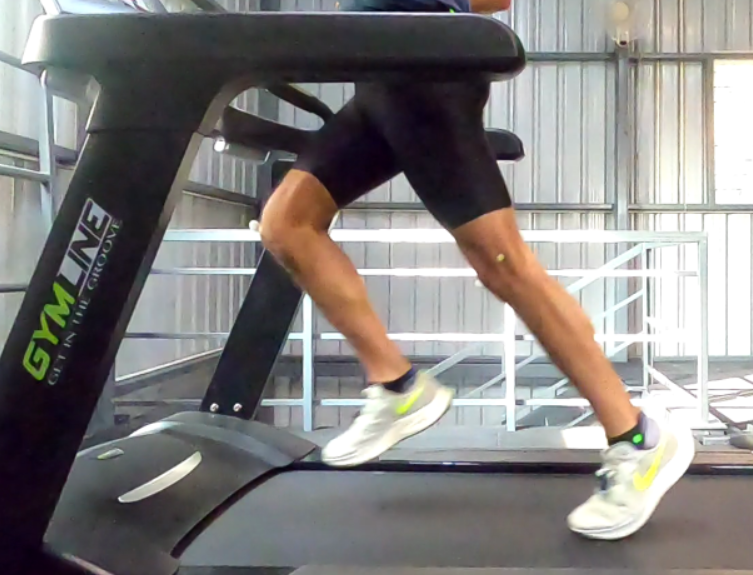Knee holds an important role in running as it is the midpoint between the hip and ankle. Knee joint facilitates the following:
- As a shock absorption mechanism at initial contact when landing through the midstance when we stabilize.
- Acts like a bouncing spring, working along with the ankle and hip joint to generate force for the push off.
- During the swing, the bend at the knee (flexion) facilitates the recovery (initial swing as the foot travels backwards) and prepares our foot to swing forward and pass the stance leg.
- The “knee drive” to support the hip extension to generate powerful stride.
Because of its position and shock forces, the knee joint is also the most injury prone. 35% of running injuries are related to knee joints.
At Run Mechanics, the most frequent running form issues that we have seen are associated with knees. Here are some of the common issues with Knee Mechanics:
- Insufficient Knee Flexion Angle: Many runners when landing don’t bend/flex enough to prepare it to handle the shock. Less flexion results higher shock at the ankle, tibia and knee leading to common injuries such as PFPS, Tibial stress fractures etc., At initial contact the angle between the hip, knee and ankle should be < 160 degrees and at mid stance that angle should reduce to <140 degrees.
- High Knee Angle: Position of knee relative to the point of initial contact is known as knee angle. Knee angle changes how ground impact forces affect ankle, knee and hip joints. An angle less than 5 degrees is what we would like to aim. Insufficient knee angle along with insufficient knee flexion angle meddles with our running form in many ways, leading to overstriding, heel strike, low cadence etc.,.
- Low Knee Flexion during swing is an important factor in stride efficiency. Higher flexion during the swing reduces the inertia making it move faster through mid-swing to terminal swing. Lower knee flexion at this point is also associated with significant pelvic drop.
- Knee Drive plays an important role in getting a good stride and also prevents overstriding. Knee drive is the ability to drive the knee forward and up before we prepare to land the feet. One of the common issues that we see is a lack of good knee drive. Good knee drive requires a strong hip extension as well on the stance leg. Picture below shows side by side views of reduced knee drive (and weak hip extension) and stronger knee drive (and stronger hip extension). A better knee drive sets us up for a longer stride.
How to improve knee mechanics?
Here are some common strategies runners can adopt to improve their knee mechanics.
Improving Knee Flexion during stance
- Often reduced knee flexion is because of overstriding. Increasing Cadence is a very effective way to improve knee flexion and reduce overstriding.
- Neuro-muscular patterns that we develop over time can also influence the knee flexion. Plyometric drills and jumps are an effective way to program and improve flexion.
Improving Knee Flexion during swing
- Hamstring muscles are responsible for controlling knee flexion. Strength and engagement of hamstring plays an important role in better knee flexion during swing. But please be aware that swing is the recovery phase of running gait, and there is a debate if the hamstring needs to be actively engaged.
- Mobility restrictions and tightness with hip flexors also can limit the knee flexion during swing. Working on reducing hip flexor tightness can help.
Improving Knee Drive
- Knee drive is not as much about the knee, but the ability to use the gluteus and hamstring muscles to drive the knee forward and up (swinging leg) supporting the powerful hip extension of the stance leg.
- Drills such as high knees, resistance band running, A-skips, and running workouts such as strides, bounds help with developing the necessary coordination to develop strong knee drive.
Be aware that changes in your running form have to be implemented with expert guidance. Issues in your running form are manifestations of muscle strength, mobility restrictions, and stability that you have. Any changes to form without addressing the root cause can result in injuries.






